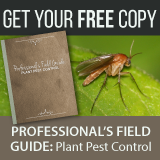

Pages: 1
| Posted: 27 Jan 2015 03:10 | |
|
Registered User Currently Offline Join Date: Mar 2012 |
Posts: 6 Reputation: Unranked User Rank: 1 - Seedling 
|
Hi, could someone please tell me about the use of lime for houseplants? Why do you use it,how often do you use it...can you use it as often as you want, how it affects ph, does it work as a fungicide, is it a calcium base? Any other information would be helpful. Thank you! Thank you!
|
|
| Posted: 27 Jan 2015 16:23 | |
|
Registered User Currently Offline Join Date: Jan 2011 |
Posts: 798 Reputation: 43 User Rank: 10 - Blossom 
|
|
There are two basic kinds of horticultural lime: hydrated lime, which is fast-acting and generally used on lawns and in vegetable gardens to correct pH problems (makes acidic soils more alkaline or "sweet"), and dolomitic lime, which is a slow-release form of limestone that is more suited for long-term horticultural applications such as indoor plants. NEVER use hydrated lime on indoor plants, especially not unless you have had an accurate soil test done first. You can easily burn the roots of your plants and create a pH overcorrection that will make certain nutrients unavailable to your plants and cause deficiency symptoms.
Most potting mixes today contain large amounts of sphagnum peat moss, resulting in a relatively low pH that can cause many plants to show nutrient deficiency symptoms. Notice I've said that about both low and high pH soils in the past two sentences? That's because certain nutrients are more available within certain pH ranges, depending on the plant. Azaleas are notorious for "liking" acidic soils, and will show chlorosis in alkaline soils, for instance. The conventional wisdom used to be that you should add a teaspoon or two of dolomitic limestone to your houseplants on a semi-regular basis in order to correct the pH drop associated with the breakdown of acidic components of the medium (peat, compost, leaf mold, etc.). But today, most potting mixes are pH-corrected before they're packaged for sale and contain mainly peatmoss, so if you're thinking your mix is too acidic, it's always mandatory to have it tested before amending it further. Otherwise, you could end up with a soil pH that is out of whack in the other direction (too alkaline), and since most tropical plants prefer a neutral to slightly acidic medium, that could spell trouble. Dolomitic lime is good for adding calcium and magnesium to the medium, and because it's slow-acting, you can pretty safely add it to your plants' medium in small doses infrequently without doing harm. Magnesium is an element that is critical to a lot of plant metabolic processes, especially nitrogen and phosphorus absorption. So if there's a real shortage of Magnesium in your soil, Epsom salts are a quicker way of adding available Magnesium to the medium. When you get your soil tested (your county agricultural extension agent is a good, cheap service for that), they will give you a printout of all of the major and minor elements present as well as pH and soluble salts (usually expressed as eC, or electrical conductivity), and often recommend what and how much to use to correct any deficiencies. Go online and Google "county extension" and your locality name and you'll get the contact and location info. Good questions! |
|
Pages: 1
Interiorscape.com is sponsored by NewPro Containers ![]() RSS 2.0
RSS 2.0 ![]() Atom 1.0
Atom 1.0













